Are you looking for outdoor lighting ideas? Read the article and discover our advice and the right lamps to combine aesthetics and design.
Correctly illuminating outdoor spaces, both private and contract, is of strategic importance and therefore deserves due attention during the design phase.
Indeed, providing the right light for outdoor environments means more than making them unique and capable of exciting those who observe them. It’s also about determining their functionality.
A successful outdoor lighting design project must be capable, on the one hand, of enhancing the architectural elements, creating contrasts, and giving life to suggestive atmospheres, based on the mood you intend to set. On the other hand, it must guarantee perfect visibility of the different outdoor environments, based on their function.
For this to be possible, the architect or interior designer must be capable of combining technique and design.
The aim of this article is to provide professionals tips and best practices for outdoor lighting, from the design to the choice of lamps.
In particular, we will take a look at:
- How to design outdoor lighting: where to start
- Where to place outdoor lighting
- Outdoor lighting: design and functionality
How to design outdoor lighting: where to start
Outdoor lighting design requires proper planning and careful consideration of the different elements involved. This is essential to grasp the peculiarities of the location and identify where to place the outdoor lamps in a spectacular and functional way.
The first steps are:
- The assessment of the environment. The professional will have to analyze the plan of the outdoor space, as well as the landscape, architecture, and the distinctive characteristics of the location, in order to be able to enhance them;
- The definition of focal points. They can be statues, trees, the facade of the house, the swimming pool, or any other natural or decorative elements. The design choices for the outdoor lighting of a house or a contract context will revolve around these elements;
- Identification of the different functional areas. For example, the lighting of outdoor paths and other transit areas which, in addition to creating the right atmosphere, must guarantee adequate visibility, to allow people to move around safely. We are also talking about the dining area, relaxation area, swimming pool, and any area that needs specific lighting, based on its intended use.
Considering these factors, along with the mood you want to set and the customer's tastes, is the starting point for a successful lighting design project.
Now let's take a look at the best practices to follow to develop an outdoor lighting project that combines technique and design.
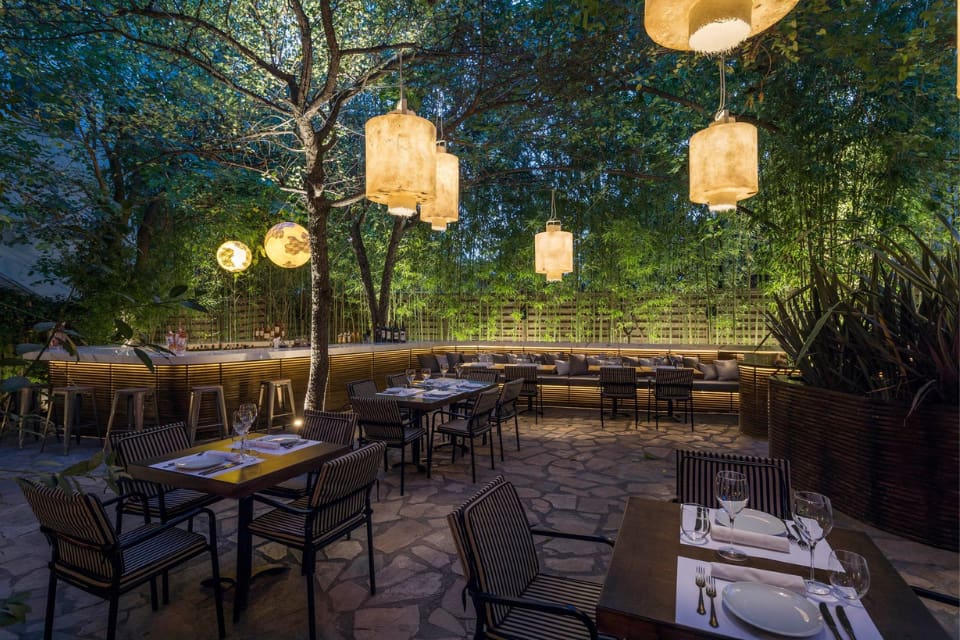
Kimono
How to illuminate an outdoor space: layer lighting
To choose the right designer lighting for the garden and the other outdoor environments, as well as indoor lighting, the designer must bring into play all their technical skills, in addition to their creativity.
The first step is to plan for multiple levels of lighting:
- Ambient lighting, i.e. the general lighting of the environment, to provide a soft, diffused and uniform light, perhaps dimmable to create different moods depending on the occasion. Ambient lighting will be the frame of the outdoor lighting design project;
- Task lighting, i.e. functional lighting, requires more direct and precise lighting, to ensure adequate brightness for various activities;
- Accent lighting is the detail that can make the difference, enhancing architectural elements (such as a stone wall for example), statues, trees, or hedges. By playing with the direction and intensity of the light, it allows you to create suggestive effects of lights and shadows.
The right idea could be to select outdoor lamps made with different materials and finishes and combine them to create a project with layered lighting.
The important thing is that they go well with each other and with the location’s mood.
How many lumens do you need to illuminate the outdoors?
As lighting experts are well aware, lumens express how much light a lamp is able to emit in all directions and are obtained by multiplying the surface to be illuminated by the light intensity (lumen= lux x sq.m.).
To determine how many lumens it takes to illuminate the outdoors, you need to consider several factors:
- The size of the area to be illuminated. A simple example is a large garden or a long path, which will require more light than a small patio;
- The goal of the lighting, or the type of atmosphere you want to create, more energetic or more soft and suggestive;
- The function of the area to be illuminated. For example, a dining area could require at least 300 lux, while an area dedicated to relaxation should not exceed 150 lux.
The calculation of lumens for outdoor lighting must therefore be calibrated on the basis of the characteristics of the specific locations and the concept to be developed.
How to choose outdoor lamps: a guide to materials
Choosing the right outdoor lamps turns out to be particularly strategic, both in terms of design, which must be able to integrate and enhance the style of the location, and in functional terms.
Particular attention should be paid to the choice of outdoor lighting materials.
What should absolutely not be overlooked is that outdoor lamps will inevitably be exposed to atmospheric agents and sudden changes in temperature. Therefore, to avoid making mistakes that would compromise functionality and durability, only materials capable of resisting these agents should be selected.
So let's take a look at an overview of the best materials for outdoor lamps.
Metal lamps
Even if it is a very versatile material due to its ability to mold itself into different shapes, as regards its adaptability to outdoor lighting, it must be distinguished according to the type of metal.
- Aluminum, in addition to being very resistant to bad weather, is easy to clean and also maintain;
- Stainless steel, although much appreciated by those who prefer a modern style, requires constant cleaning to keep the chromium oxide layer intact;
- Brass, due to the extreme hardness and resistance of this material, lends itself very well to outdoor lighting and guarantees durability over time;
- Copper. When choosing copper it is good to know that, although it is a high-quality material, it risks darkening over time with exposure to atmospheric agents.
Therefore, we give you the green light to choose metal for outdoor lighting, but make sure you consider its peculiarities.
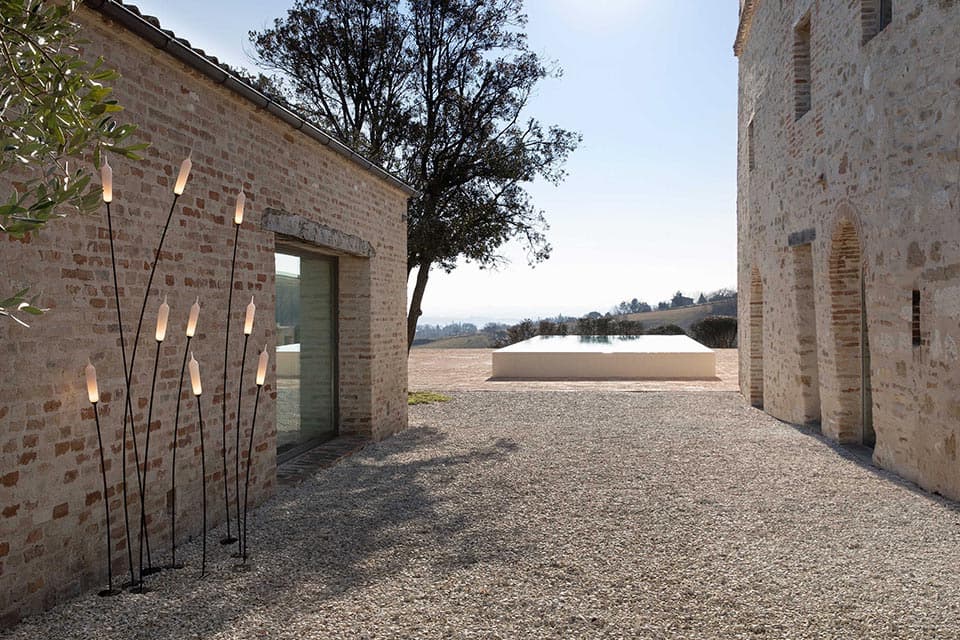
Nilo
Fiberglass lamps
Fiberglass is a material that lends itself to the experimentation of new linguistic forms.
It not only offers a great aesthetic result but also extreme functionality.
Fiberglass outdoor lamps, in fact, have the advantage of being light and resistant at the same time and are immune to any kind of shock, thanks to the flexibility of the material.
They have excellent resistance to atmospheric agents, to sudden changes in temperature, and require virtually no maintenance.
Glass lamps
Glass is characterized by its timeless elegance and the lamps made with this material provide a soft and persuasive light.
Extremely versatile, in shapes, colors, and the different guises that they can take on every time, glass outdoor lamps are easy to clean and maintain.
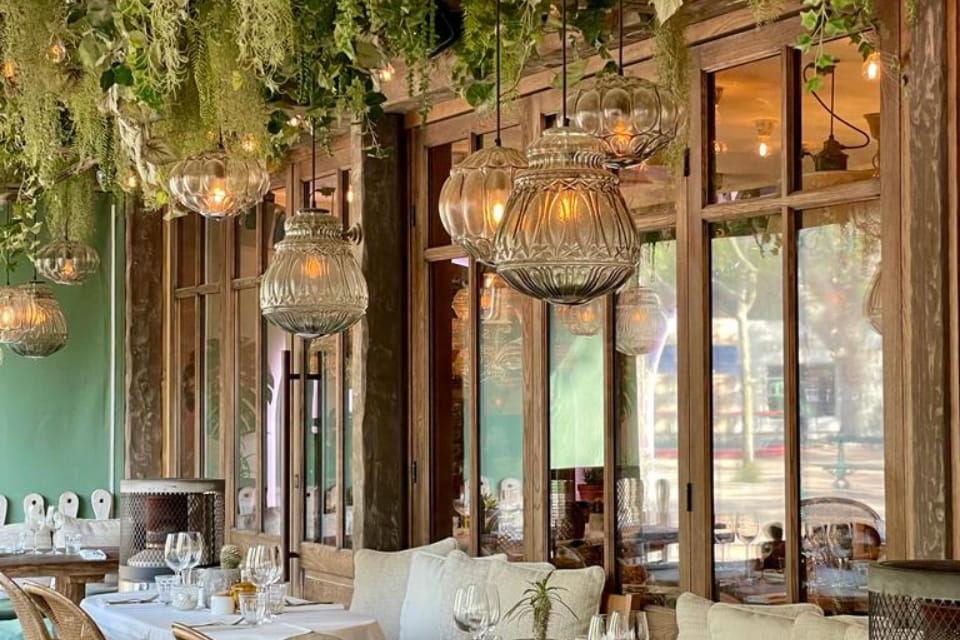
Ginger
Technopolymer lamps
Another material to evaluate for outdoor lighting is technopolymer.
Technopolymer lamps are designed to withstand weather conditions without getting damaged.
Easy to clean and with minimal maintenance, this material also offers great design flexibility, allowing for the creation of lamps with original and unique shapes and finishes, capable of adapting to the most diverse styles and architectural projects.
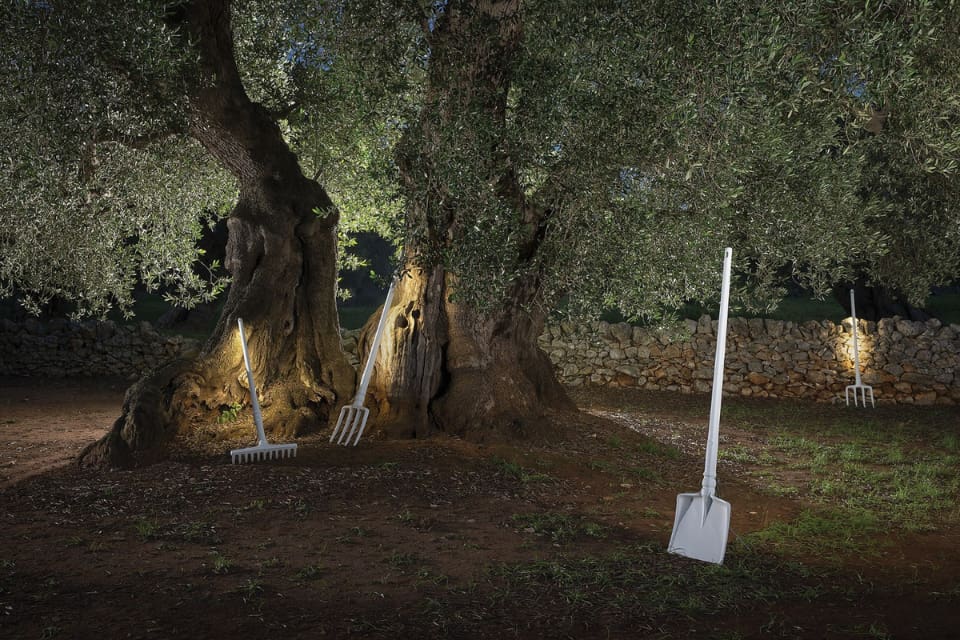
Tobia
Where to place outdoor lighting
To find the right balance between decorative lighting and technical lighting, it is essential to evaluate the correct positioning of the lamps for outdoor lighting.
To decide where to place the outdoor lamps, the professional will have to take into account the focal points and the different functional areas identified, as well as the elements they intend to enhance.
For each of them, they will have to identify the most suitable type of light, by intensity and color temperature, depending on the intended use of each area, and choose the type of lamps which, in terms of style and design, are best suited to the concept they intend to develop.
Let's look at some examples of outdoor designer lamps you can take inspiration from for the different areas of the outdoor environment. They are capable not only of providing the right light but becoming precious furnishing elements, making each location unique and unforgettable.
How to illuminate an outdoor path
Illuminating outdoor paths requires great levels of optimal task lighting so guests can move easily and safely even at night.
Maximum functionality is important, but you shouldn’t give up the aesthetics. You want to create a unique setting, able to involve passers-by emotionally.
Among the most popular solutions for outdoor lighting in these transit areas is lanterns.
An original and refined idea that is romantic and playful at the same time is Abachina. It is also very convenient in the version with a rechargeable battery, for terraces and outdoor spaces.
It is a parallelepiped-shaped structure in matte aluminum (black or white) with two small anchored luminous spheres in white blown glass, which are surprising because they seem to float in the air.
Several lanterns, playing with the two different heights, placed along the walkway or path will make the guests’s journey magical.
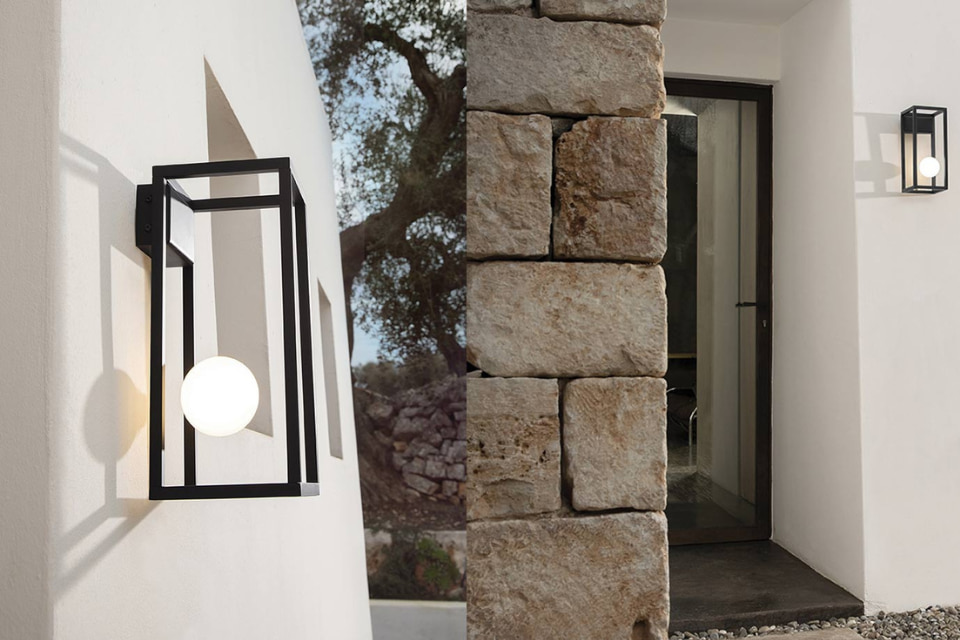
Abachina
A charming alternative to lanterns but similar in function, is Lady D, in the floor lamp version.
Its white fiberglass silhouette recalls the elegance of a crystal chandelier.
As its name evokes, Lady D, as well as the homonymous princess, preserves the class of a chandelier of high lineage but with simplicity and sincerity, thanks to the choice of a non-conformist material.
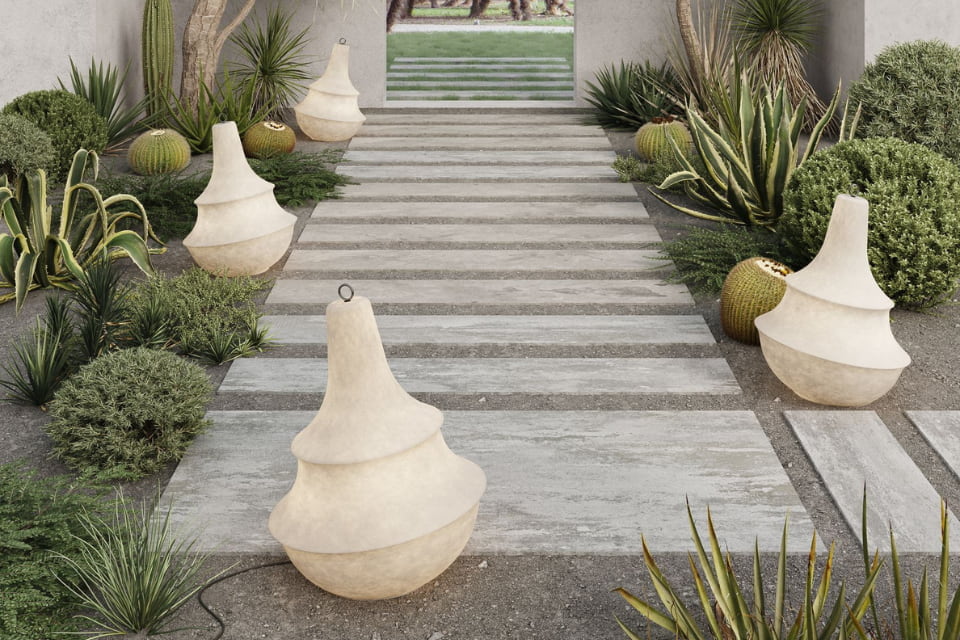
Lady D
How to illuminate the lawn and flower beds in an original way
No element must be overlooked in the outdoor lighting of a house or accommodation facility.
Even the lawn and flower beds must be enhanced so that every single space emanates care and refinement.
An innovative and original idea to illuminate these natural elements is to use lamps that refer to nature itself.
For example, Atmosphere is a floor lamp that evokes a blade of grass with a drop on the top, which is its light source.
It is a light and minimal lamp capable of providing a soft and enveloping light.
The blade is a bar in knurled glass fiber painted white or black of different heights which rests on a circular metal base, while the drop is a spherical luminous body in PVC.
The picket version was designed to create suggestive atmospheres in the garden and between the hedges.
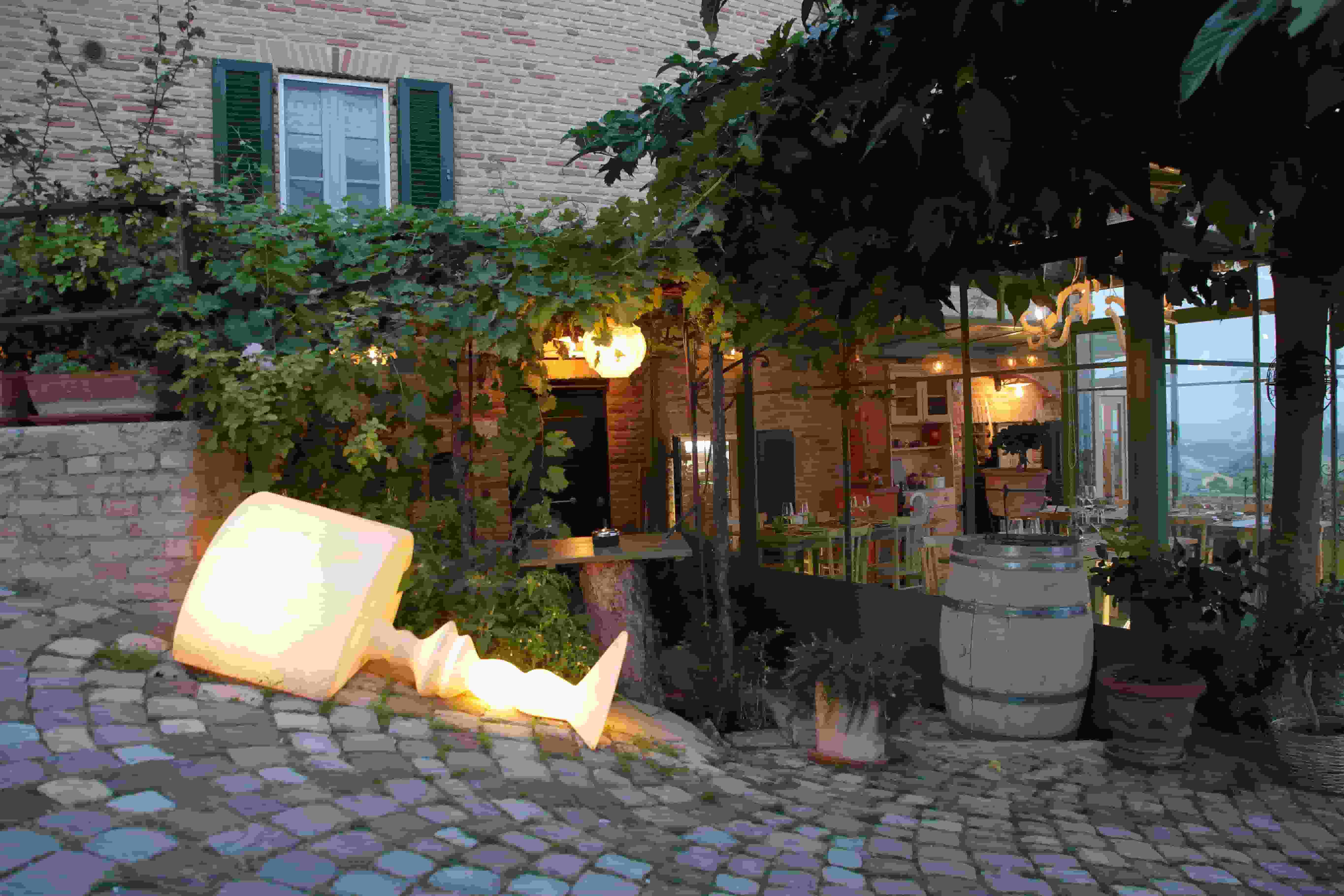
Alibabig
How to illuminate the poolside between technique and design
Whether it is the outdoor lighting of private homes or hotels or outdoor spaces at restaurants, the swimming pool is an element of undoubted charm and prestige.
Here, too, decorative luminosity and technique must go hand in hand.
One of the most functional choices is to place floor lamps along the perimeter of the pool.
An idea with an unusual design capable of involving touch as well as sight is Don’t Touch.
It is a floor lamp with a base in gray technopolymer and rods in white PVC, whose shape evokes the threadlike silhouette of garden plants.
This solution provides a great visual impact, so the observer will hardly be able to not touch it, and, at the same time, it is an excellent source of direct light.
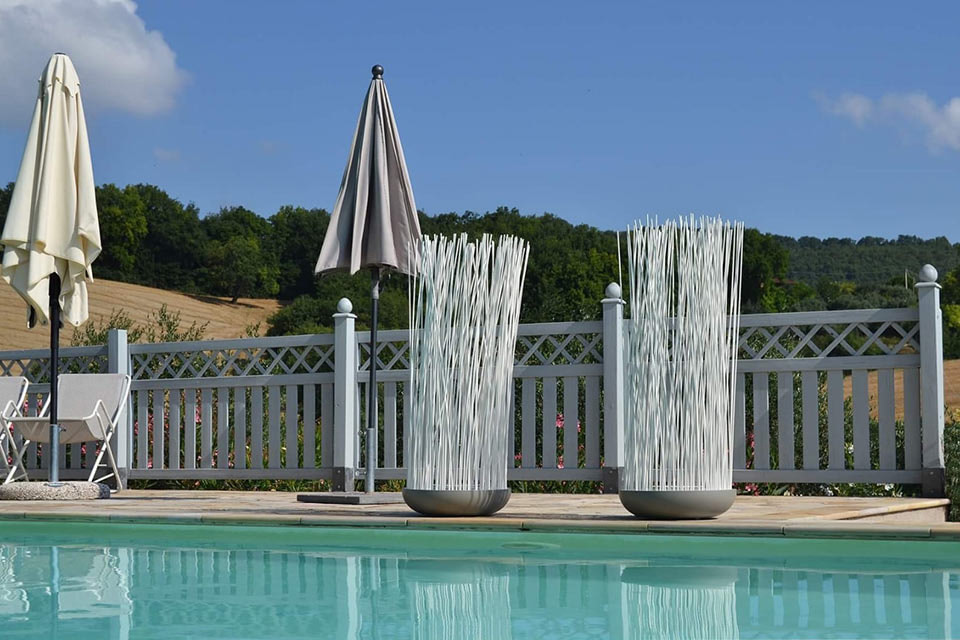
Don't Touch
How to illuminate an outdoor dining area
Whether it is located under a porch, on a patio, or at an outdoor restaurant, the dining area requires targeted lighting that promotes conviviality at the table and creates an intimate and welcoming atmosphere.
In this sense, suspended outdoor lamps are certainly the best solution.
Different in shape, style, and materials, used individually or in a composition, they are capable of adapting to the mood of each location.
For example, Moby Dick is a lamp in white fiberglass whose shape evokes the profile of a whale.
Extremely versatile, it adapts to both the most minimal and the most elaborate contexts, offering refined plays of light and shadows.
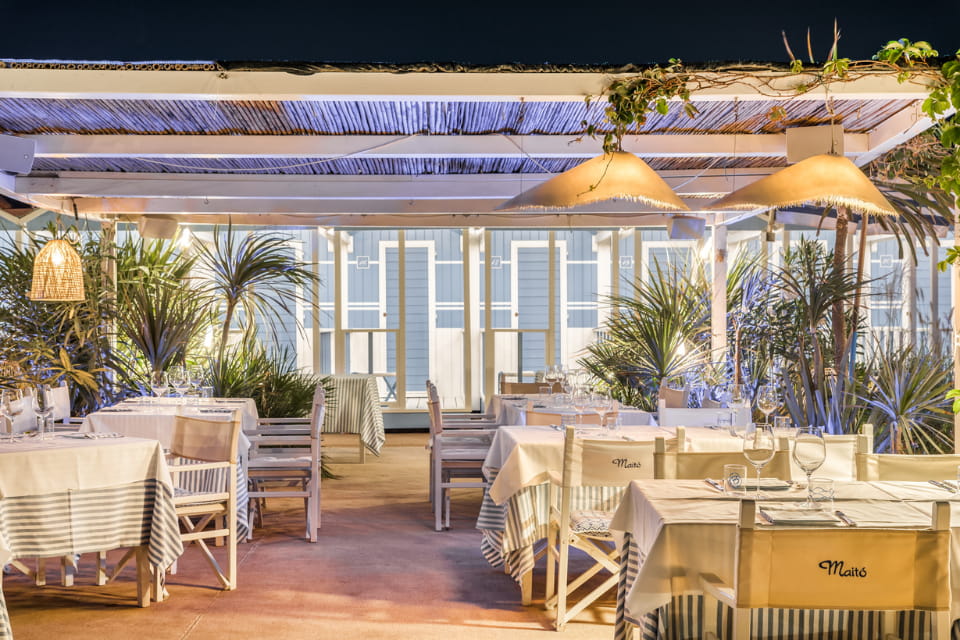
Moby Dick
With a decidedly modern and futuristic character, Leda, instead, is an absolutely unconventional solution for outdoor lighting.
It's a collection of modular lighting elements, consisting of an alternation of cylindrical bars and small spheres in anodized aluminum, bronze or black, ringed on a wire that supports an LED strip wrapped in a transparent and flexible silicone tube.
It is customizable and installable in all directions, and illuminating a dining table, under a porch for example, with an arched configuration would be perfect.
With a decidedly different style that is simple but extremely evocative, Kimono, is a suspension lamp made of white fiberglass that recalls the old Japanese lanterns.
Its suggestive transparencies will create an intimate and rarefied atmosphere at the dining table or at the tables of an outdoor restaurant.
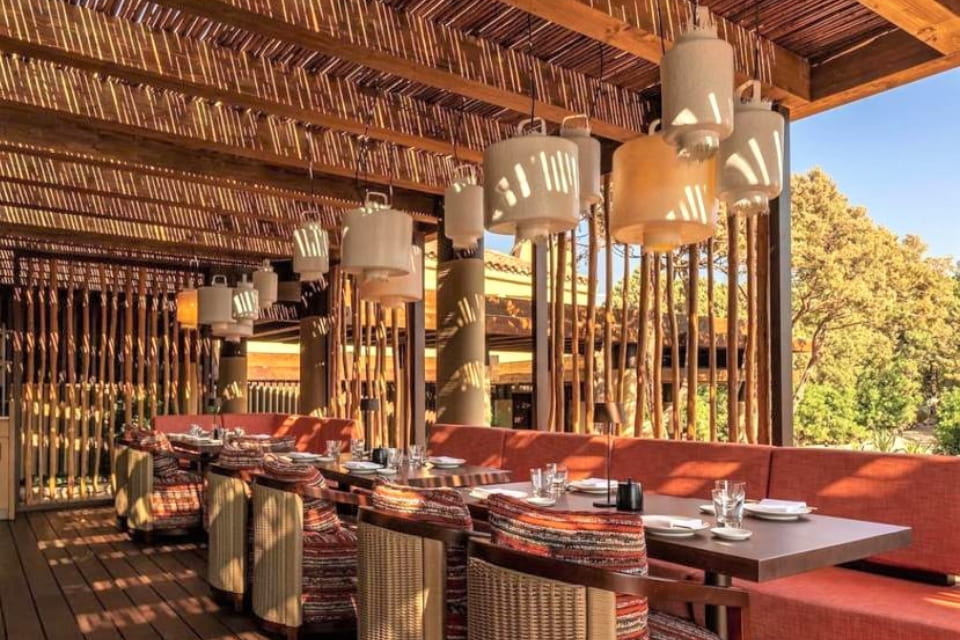
Kimono
How to illuminate an external wall
We have talked about the importance of accent lighting and how even a facade, or a particular architectural structure, deserves to be highlighted.
To illuminate an external wall with elegance and discretion, the right choice could be an outdoor lamp like Agua, a wall lamp with a glass spotlight with circular outlines that is mouth blown, transparent or satin, and has a base in black anodized aluminum.
This lamp, whose shape recalls that of a dew drop, is capable of creating unexpected light on the walls and on the reflective surfaces.
If instead, in addition to drawing attention to the external wall, you want to insert a lighting fixture that itself represents a distinctive element that catches the observer's eye, the right answer could be Alibabig.
In its wall lamp version in white fiberglass, it can be installed, for example, on a stone facade, which will emphasize the structure with delicate light, capturing the attention of the observer and leading them into the world of an oriental fairytale.
Outdoor lighting: design and functionality
We have seen how creating an outdoor lighting project requires the implementation of a series of actions and strategies which, together, make it possible to combine aesthetics and functionality, visual impact and technical performance.
A careful study of the outdoor space and the identification of the different functional areas is, therefore, the first step to a successful lighting design project.
Creating a lighting project with layered lighting, with all the levels of lighting (ambient, task and accent lighting), will give the right play of volumes, lights, and shadows and will create drama.
In choosing the outdoor lamps, it is essential, in addition to identifying the design of the lamps in line with the location’s mood, to mix and match and consider the type of material most suitable in terms of durability and maintenance.




